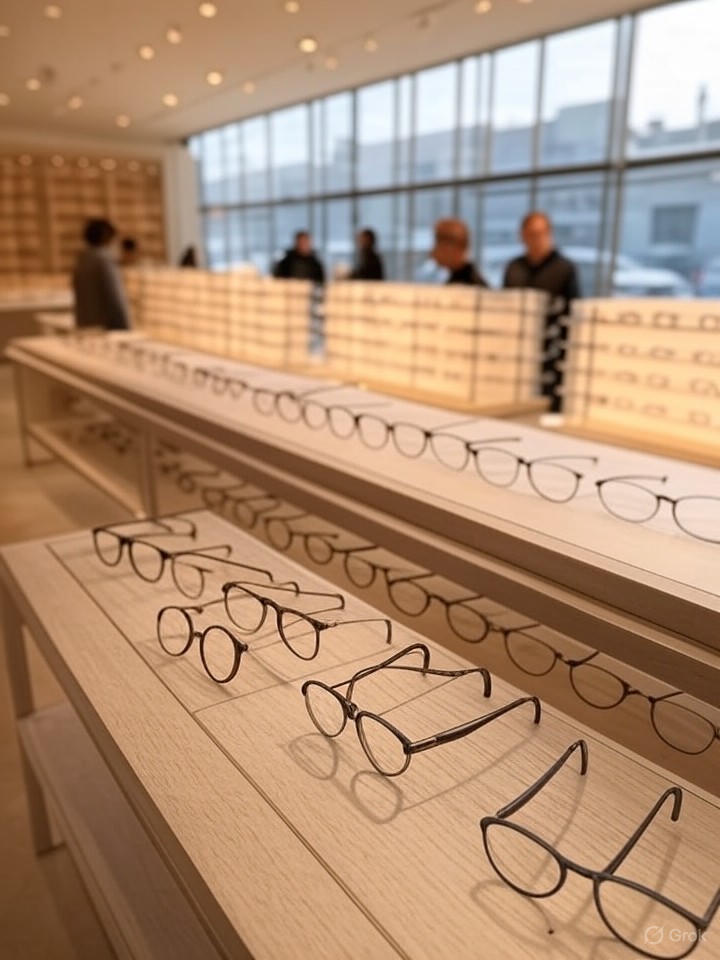Warby Parker’s decision to discontinue its signature Home Try-On program by the end of 2025 marks a pivotal shift for the eyewear retailer that once disrupted the industry with its direct-to-consumer model. Launched in 2010, the program allowed customers to receive five pairs of frames at home for free, try them on, and return what they didn’t want—a strategy that helped the company build a loyal following by addressing the hesitation of buying glasses online without physical testing. But as Warby Parker expands its physical footprint to over 300 stores, executives argue the service has become redundant, with most users living within a 30-minute drive of a location, according to details shared in the company’s second-quarter earnings report.
This move isn’t isolated; it reflects broader trends in retail where virtual technologies are supplanting physical try-on experiences. In its Q2 earnings call, Warby Parker highlighted how advancements in augmented reality (AR) and digital tools are filling the gap, enabling customers to visualize frames on their faces via apps without shipping physical products. The company, which first dipped into AR with a virtual try-on feature in 2019 as reported by TechCrunch, has since refined these tools, integrating them more deeply into its online platform.
The Rise and Rationale Behind Phasing Out Home Try-On
The Home Try-On program’s end comes amid Warby Parker’s robust growth, with net revenue climbing 13.3% to $188.2 million in Q2 2025, per the earnings release on Morningstar. Executives noted that the program’s usage has declined as the store network expanded, making it less cost-effective to maintain. Shipping and logistics costs, coupled with returns, have long been pain points for such services, and Warby Parker’s leadership sees virtual try-on as a more efficient alternative that reduces overhead while enhancing the customer experience.
Industry analysts echo this sentiment, pointing out that virtual try-on technologies have matured significantly, powered by AI and smartphone cameras. For instance, Warby Parker’s app now uses facial mapping to provide realistic previews, a far cry from early iterations. This pivot aligns with the company’s omnichannel strategy, where digital innovation complements physical retail, as discussed in a recent analysis by Omni Talk, which praised the move as a “smart omnichannel evolution.”
Comparisons to Peers and Broader Industry Shifts
Warby Parker isn’t alone in ditching home try-on. Amazon quietly ended its Prime Wardrobe “try before you buy” service in January 2025, opting instead for virtual fitting tools, a trend highlighted in coverage from Modern Retail. Similarly, other brands like Ever and Pair Eyewear have scaled back physical try-ons in favor of AR, driven by improved accuracy in virtual simulations that now account for lighting, face shape, and even skin tone variations.
This shift raises questions about consumer behavior in the eyewear sector, where fit and style are paramount. Posts on X (formerly Twitter) from retail insiders suggest mixed reactions: some lament the loss of tactile experience, while others applaud the efficiency, with one user noting how virtual tools have “revolutionized online shopping for glasses.” Yet, as Digiday reported in its deep dive, the end of home try-on programs signals a maturing direct-to-consumer model, where brands like Warby Parker prioritize profitability over novelty.
Financial Implications and Executive Changes
Financially, the discontinuation is expected to streamline operations, contributing to Warby Parker’s adjusted EBITDA increase to $25 million in Q2, up from the prior year. The company also announced executive shake-ups, including the departure of CFO Steve Miller in October, as detailed in Business of Fashion. These changes underscore a focus on scaling efficiently, with investments in digital enhancements projected to drive future growth.
Critics, however, question if this alienates core customers who valued the low-risk entry point. A discussion on RetailWire debates whether ending the program is wise, with some experts arguing it could erode brand differentiation in a competitive market dominated by giants like Luxottica.
The Future of Virtual Try-On in Eyewear Retail
Looking ahead, Warby Parker’s bet on virtual try-on could redefine industry standards, especially as AR glasses and metaverse integrations loom. The technology’s evolution, from Apple’s ARKit integrations to AI-driven personalization, promises even more immersive experiences. As Retail Dive noted, with 95% of revenue still from glasses, bolstering digital tools is crucial for maintaining momentum.
For industry insiders, this transition highlights a key lesson: innovation must adapt to scale. Warby Parker, once a disruptor challenging high-priced monopolies—as chronicled in viral X threads about its origins—now embodies the next phase, blending physical presence with cutting-edge tech to stay ahead. While the Home Try-On era ends, it paves the way for a more seamless, tech-forward approach that could inspire rivals to follow suit.




 WebProNews is an iEntry Publication
WebProNews is an iEntry Publication